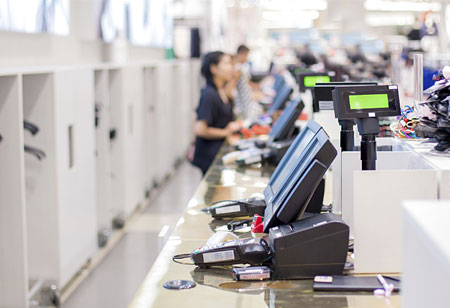THANK YOU FOR SUBSCRIBING
Smart Shopping Experiences with AR and VR
Augmented Reality (AR) and Virtual Reality (VR) have been lately deployed both in physical and online retail marketing to offer an excellent digital shopping experience.

By
Apac CIOOutlook | Thursday, January 01, 1970
Stay ahead of the industry with exclusive feature stories on the top companies, expert insights and the latest news delivered straight to your inbox. Subscribe today.
Augmented Reality (AR) and Virtual Reality (VR) have been lately deployed both in physical and online retail marketing to offer an excellent digital shopping experience. However, with AR and VR still in the advent stage, its practical applications in the retail sector are still fragmented, allowing research analysts to capture attributes in the interdisciplinary origins.
The theoretical framework of online marketing comprises of three main areas: returns, distributed network, and omnichannel retailing. In returns, the mere possibilities of the product being returned by the customers are due to a defective product or change of mind. This cause may lead to huge loss to the retailers since the product sent may often be new products, and are uniformly packed. During the distribution process, in spite of the direct exchange of goods from retailer to consumer, there is a radical transformation within the retail distribution. The products are initially processed through the distribution centers, middleman services, and later to the end customer, which is a time-consuming process, waste of workforce, and resources.
Few insights are captured by deploying augmented reality in real time. The main advantage is in terms of reduction in the cost of returns. Through AR, the customer can engage in the concept of “try before you purchase,” where digitized experience can be given to customers with similar physical properties of goods so that customers can have a clear idea about the products before they purchase them.
Furthermore, allowing customers to select their product at home will enable retailers to develop an emotional bond amongst the customers before the product is purchased. The innovative 3D visualizations allow customers to visualize their product in real time, encouraging faster purchasing decisions rather than guesswork.
A unique physical layer allowing a customer to experience similar shopping as in reality can be observed by deploying AR. It allows customers to extract the details of the product and nuances in a real-time scenario. In general, through online shopping integrated with AR, several futuristic aspects such as holistic customer experience, numerous choices by looking at the sales data, and the review, better return policy can be achieved along with omni-channel services. However, certain factors such as channel integration, the capability to handle uncertainties, return forecasting, and the speed of transformation are still at the development stage. These features should be effectively analyzed to provide customers with enhanced service models.
Check This Out: Top AR/VR Consulting/Services Companies





